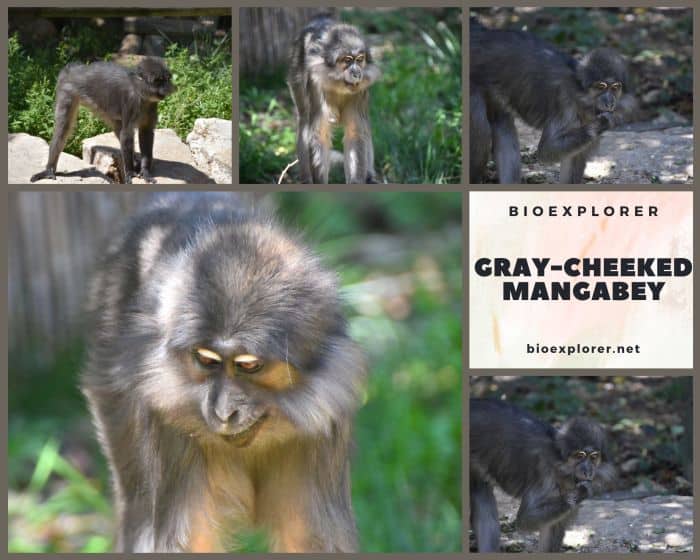
| Animalia | Primates | Cercopithecidae | Lophocebus | Lophocebus albigena |
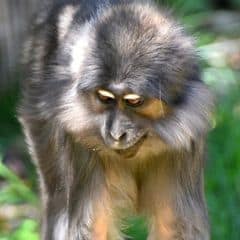

- Common Name: Gray-cheeked Mangabey
- Taxonomy Classification Year: 1850
- Monkey Size: 43 to 73 cm (17 to 29 in)
- Skin Color(s): Gray or Blackish Gray
- Habitat: Forest, rainforest
- Diet: Omnivorous
- Native Countries: Nigeria, Uganda, Cameroon, Gabon
Gray-cheeked Mangabey Distribution
Gray-Cheeked Mangabey Characteristics
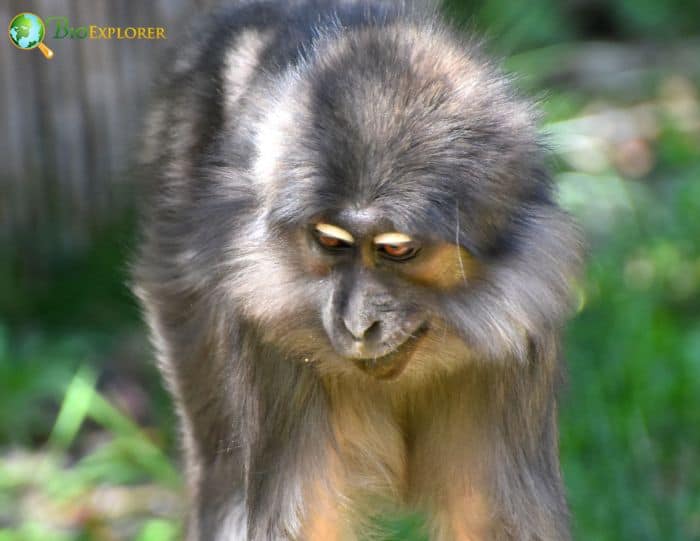
The gray-cheeked mangabey[1] (Lophocebus albigena), also called the white-cheeked mangabey, is an Old World monkey found in the forests of central Africa.
- The gray-cheeked mangabey is a sizeable arboreal primate with gray and often whitish cheeks.
- Their long, lanky bodies are dark or black gray. L.a. albigena, a nominate subspecies, typically has a black spot on the nape and withers (the area between the shoulder blades).
- The hair on their head is scruffy and long, resembling small horns above their eyebrows.
- Their face, eyes, and skin are also dark. In addition, their chest and front legs are heavier than the rest of the body.
- The long gray or brown hairs on the shoulders and neck form a cape. They have long tails and long limbs that give them balance when running through the forest.
- Their tail is somewhat prehensile and powerful enough to grab onto branches while leaping through trees.
What Do Gray-cheeked Mangabeys Eat?
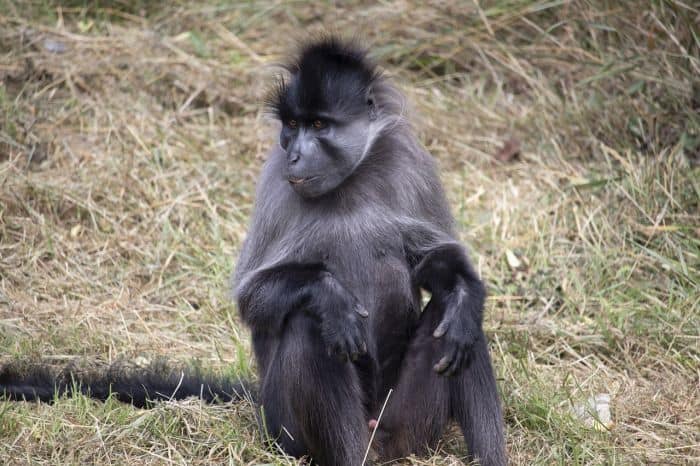
Based on the detailed research published in the African Journal of ecology, the Gray-cheeked Mangabey feeds on these food sources not limited to[¶]:
- Hexapoda (Insecta)
- Boleko Nut (Ongokea gore).
- Butter Tree (Pentadesma butyracea).
- African Oil Palm (Elaeis guineensis).
- African Nutmeg (Pycnanthus angolensis).
- African Teak (Milicia excelsa).
- African Mammee-Apple (Mammea africana).
- Horsewood (Clausena anisata)
- Fig (Ficus)
- Chinese Banyan (Ficus thonningii).
- Broom Cluster Fig (Ficus sur).
- Umbrella Tree (Musanga cecropioides).
- Boarwood (Symphonia globulifera)
- Calabash Nutmeg (Monodora myristica).
- Pokeweed (Phytolacca)
- Aframomum (Aframomum)
- Treebind (Cissus)
- Moambé Jaune (Annickia chlorantha).
- Emien (Alstonia boonei)
- Velvet Tamarind (Dialium guineense).
- Umbrella-Tree (Maesopsis)
- Trichilia (Trichilia)
- Djave (Baillonella toxisperma)
- Inoi Nut (Poga oleosa).
- Rattan Palm (Eremospatha macrocarpa).
- Red-Fruited Stinkwood (Celtis mildbraedii).
- Olon Tendre (Zanthoxylum heitzii).
- Tropical Almond (Terminalia)
- Tallow Tree (Allanblackia floribunda).
- Raffia Palm (Raphia)
- Persimmons (Diospyros)
- Hackberry (Celtis)
What Eats Gray-cheeked Mangabeys?
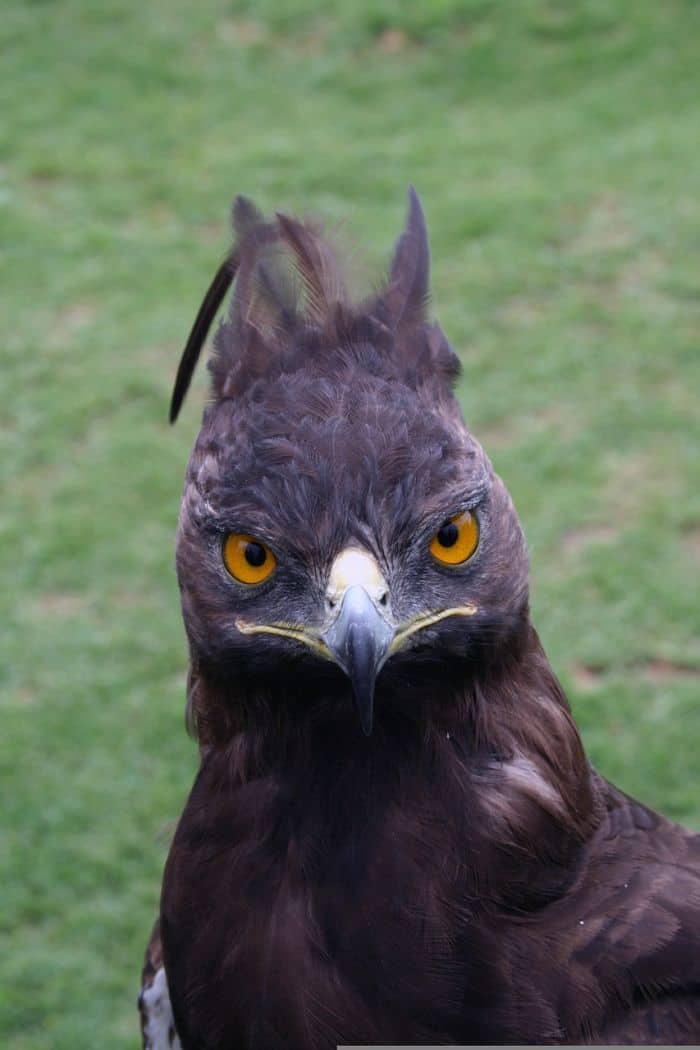
Humans (Homo sapiens), Crowned eagles (Stephanoaetus coronatus) and Leopards (Panthera pardus) are the primary predators of Gray-cheeked Mangabeys[§].
Gray-Cheeked Mangabey Facts
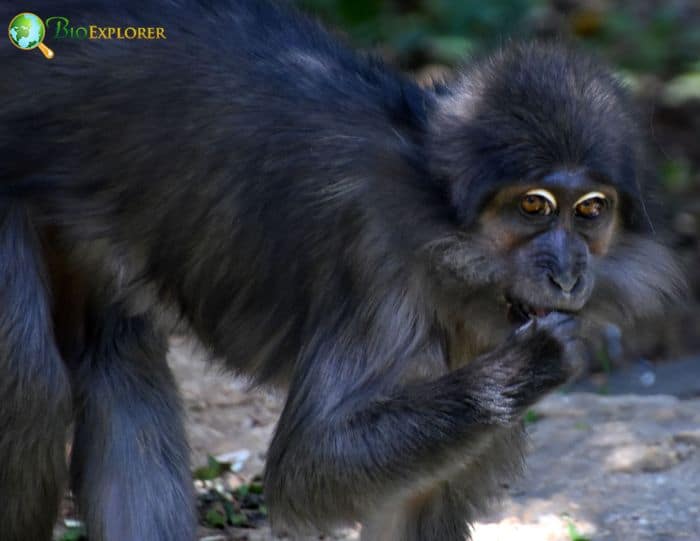
- Gray-cheeked mangabeys belong to the same family (Cercopithecinae) and phylum (Papionini) as mandrills, macaques, and baboons. In fact, they are also sometimes called baboon mangabeys.
- A single infant is usually born with soft fur and open eyes.
- If enough food is available, groups of mangabeys will congregate for a while and even group party members.
- Like baboons, a female mangabey’s buttocks swell and turn pink when they are ready to breed.
- Gray-cheeked mangabey life expectancy varies depending on diet. For example, troops eating hard-shelled nuts can wear down their teeth much faster and die younger than those eating a softer diet.
Suggested Reading: All Types of Monkeys
Different Eagle Species like the Martial Eagle are capable of preying on Gray-cheeked Mangabeys in their habitats.
Cite This Page
APA7MLA8Chicago
BioExplorer.net. (2025, May 27). Gray-Cheeked Mangabey. Bio Explorer. https://www.bioexplorer.net/animals/mammals/monkeys/gray-cheeked-mangabey/.
BioExplorer.net. "Gray-Cheeked Mangabey" Bio Explorer, 27 May 2025, https://www.bioexplorer.net/animals/mammals/monkeys/gray-cheeked-mangabey/.
BioExplorer.net. "Gray-Cheeked Mangabey" Bio Explorer, May 27 2025. https://www.bioexplorer.net/animals/mammals/monkeys/gray-cheeked-mangabey/.







